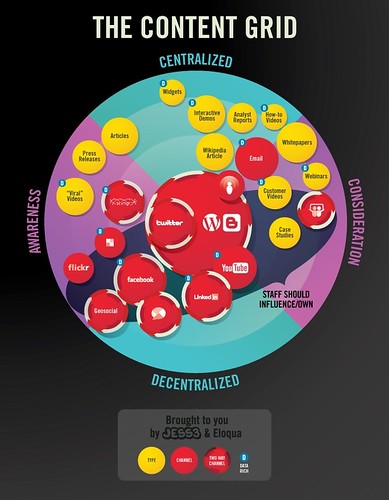Fuel Your Sales Cycle with Quality Content

Image source: Fernando Amaro on
flickr.

You
want a shorter
sales cycle and your customers want a shorter buying cycle. No one benefits
from prolonging the process. But if your goals are aligned, why is it that
things seem to be going in the opposite direction?
- According to the International
Data Corporation (IDC), 56% of the buying process is spent searching for
educational content.
- IDG reported that 86% of B2B
buyers say that the content created by marketing departments is not useful,
relevant or aligned with their needs.
- A study from Forrester says
that 76% of buyers choose vendors that can have intelligent conversations and
deliver effective value messages.
- Sirius Decisions reported that
the number one sales inhibitor is an organization’s inability to communicate
the value of their products.
Note: I found these statistics in
this blog post from Accent Technologies.
Provide Content Throughout the Sales Cycle

Image: An interesting content grid, brought to us by JESS3 and Eloqua on
flickr.
So where is the
disconnect? Buyers want to make informed decisions and very few marketing
departments deliver the right content during the buying process decision points,
so buyers struggle.
The solution is
to
provide content throughout the sales cycle. Many content marketers use
content for awareness, along with top of the funnel lead generation. While good
content is one of the best ways of attracting the right traffic to your website,
there is no reason to end the process there. Think about producing similar content that
addresses the middle and bottom stages of the sales cycle (also known as the
“sales funnel”).
Top of the Funnel
The most common
goal for content marketing is awareness and lead generation (top of the
funnel). This is the beginning of the relationship with a potential customer.
In this stage, you offer
free, timely, engaging, and interesting content. In
some cases, you “gate” the content, which means that you provide it to the
reader in exchange for their contact information.
To create
effective “top of the funnel” content, you need to have a definition of your
ideal prospect and be familiar with their pain points. You need to create
content for this them without a big sell message, you need to educate to build
trust, and each piece of content you create needs to be done in a way that it
leads the prospect to the next “aha” moment.

Middle of the Funnel
If your
organization uses a marketing automation solution, you probably know that this
is a very effective way of nurturing leads that are not ready to buy. But
without content, it is going to be a real challenge to get the most out of your
messages to your prospects, and the
more content you have, the more options
you’ll have to share with them.
Leads that are
still in nurturing stage are usually looking for information to move to the
next stage of the cycle, and being able to share your own content gives you an
opportunity to reach out to them and help them make a decision. At the same
time, you are building trust and engagement.
Image source: Carla Gates on
flickr.
Bottom of the Funnel
At this stage of
the funnel, it’s likely that prospects have engaged with your sales reps. In
this stage, potential buyers need clear evidence that your product or service
is going to meet their needs, so you have to be careful with the content you
make available to your sales reps for them to share.
For “bottom of the
funnel” leads that have “gone cold” (i.e. they have not replied back to your
sales rep), new
content is a great way for Sales to re-engage with them.
Be sure to work closely
with your sales team. You get to hear first-hand the problems, requests and
questions they get from prospects, giving you great ideas on new content that
you should be creating.
Advocacy
The utility of
your content doesn’t need to end when a prospect becomes a customer. Your
content can be used to inform customers about other products or new features,
and it can also help them get the most out of your product. The end result is
not only a more satisfied customer, but reduced support calls allowing them to
focus.
Happy and informed
customers can be
great assets for your organization. In this world where
everyone is connected, they can be great advocates for your company. They can
validate your message by creating content themselves, or by sharing the content
you create. In the end, they have more credibility than you.
Conclusion
While content is
key for lead generation, it can do a lot more than that for you and you can
extend its life by reusing it at the other stages of the buying cycle. The
results will be:
- A higher ROI of your content
- A more empowered sales team
- A happier and more focused
support team
- A group of advocates who will
validate your message and recommend your products or services
Now it's your turn. Use the Comments section below to
share your thoughts on how content can apply to the entire sales cycle. Thanks!